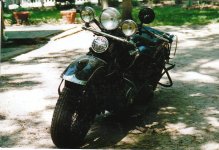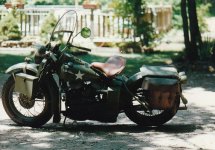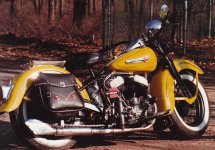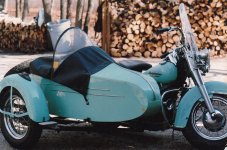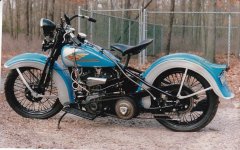CTII pilot
Member
I posted a threat back in April concerning my port engine on our new to us 97 Tiara 2900 open. I had the risers/elbows replaced on both the engines in May. The port engine was heating up hotter/faster than the starboard engine but wouldn't go about 180 at idle. The history was anytime the engine was pushed up above 1000 rpms it would start to get hot (i.e. 210 plus until pulled back.) The mechanic hooked up his computer to it and said that both the motors were about 155 vs. the 175 gauge said at the time (starboard said 160ish). After that I took the boat out and ran it for about 5 minutes and it didn't get above 180. I thought the problem was solved and left it alone. We mostly idle around due to local restrictions so don't get to run it that much. I went out last weekend on a short cruise and as soon as I pushed it up to 3000 rpms it started to get hot again. It got up to 220 and the high temp light came on after several minutes. I would tap on the gauge and it would go to full scale hot. This fueled my thought it was a gauge error. I pulled it back and idled back in. I swapped the gauges on Friday and went out again on Saturday. I pushed the throttles up to 2000 for 1 minute. The gauges were both rock solid at 180. I then pushed the throttles up to 3000. The port engine started indicating hot again and after approx a minute was 210. I pulled the power back to idle. I then ran the boat at 2000 rpms for another 8 minutes. The port temp indicated 200 while at 2000 and the starboard stayed at 180.
I also noticed that the port overfill coolant tank fluctuates between the full/add more fluid lines...i.e. i took it out and it was just above the add more fluid line and when I came back in it was at the full line. The starboard tank is always at full. The coolant on both motors was replaced when the elbows were replaced.
90% of our time is spent idling around. Both of the engine indicate 175 at idle. I do think there was an issue with the port gauge which is now the starboard gauge because it indicated hotter (10 degrees or so) when the panel lights are on and because of when tapping on it would go to full scale hot. The mechanic said when he changed the risers that he thought it was either a gauge or sender issue. I have ruled out the gauge and moving on the sender. However, it doesn't make sense to me that it would be solid at 175 on both engines at idle and then only get hot on the port engine. I would think if it was a sender issue it would be consistent error across the complete spectrum of power settings.
Thoughts/Suggestions? Thanks for the help in advance. I want to try the issue resolved by Saturday for a 50 or so mile trip down the intercoastal.
I also noticed that the port overfill coolant tank fluctuates between the full/add more fluid lines...i.e. i took it out and it was just above the add more fluid line and when I came back in it was at the full line. The starboard tank is always at full. The coolant on both motors was replaced when the elbows were replaced.
90% of our time is spent idling around. Both of the engine indicate 175 at idle. I do think there was an issue with the port gauge which is now the starboard gauge because it indicated hotter (10 degrees or so) when the panel lights are on and because of when tapping on it would go to full scale hot. The mechanic said when he changed the risers that he thought it was either a gauge or sender issue. I have ruled out the gauge and moving on the sender. However, it doesn't make sense to me that it would be solid at 175 on both engines at idle and then only get hot on the port engine. I would think if it was a sender issue it would be consistent error across the complete spectrum of power settings.
Thoughts/Suggestions? Thanks for the help in advance. I want to try the issue resolved by Saturday for a 50 or so mile trip down the intercoastal.


